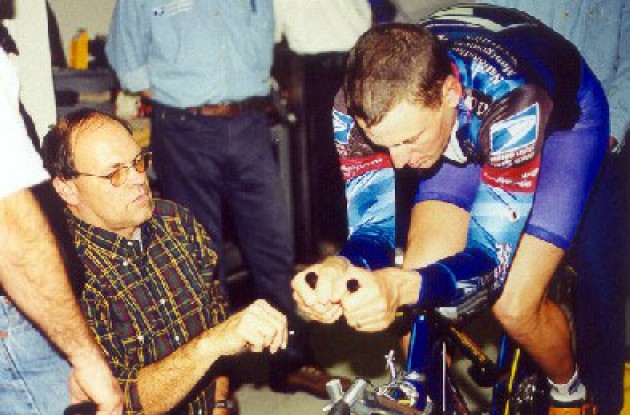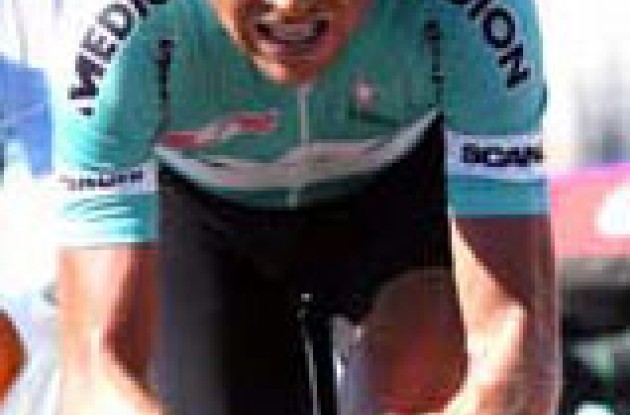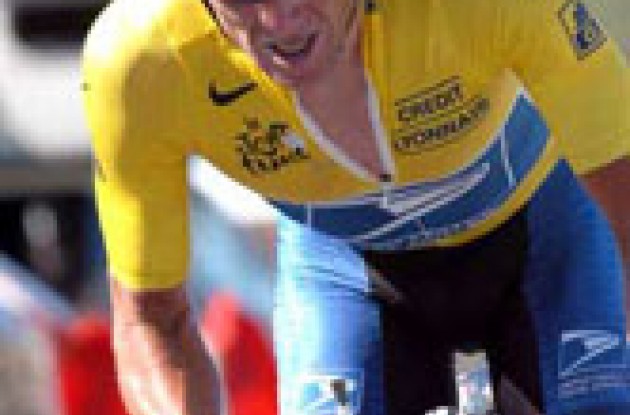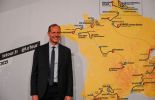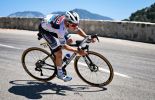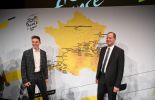John Cobb Interview
In the world of cycling you are often referred to as the god of aerodynamics. How long have you been focusing on this specific area, and what makes you especially interested in this area?
I have been doing cycling specific testing since 1984. I Started by helping a local racer set a new state TT record and kept progressing from there. I have a motor sports background and quickly realized how limited humans were for motors so I applied some of my race car thinking to the problems. I enjoy working with air flow and trying to figure out how to slip through it better.
How do you balance working with pro teams and maintaining a bike shop at the same time?
I generally work with the teams in the winter or very early spring. That leaves plenty of time for working with triathletes and age group racers during their racing season.
Often improving aerodynamics in time trials will cut only a few seconds off the finish time - but these seconds are crucial to contenders in races like the Tour de France. Therefore, teams must constantly make sure that they keep that edge over the competition. You're working with the
I really just have a "handshake" deal with Lance that I won"t fix up any of his main competitors while he's racing in
You have been working with Lance Armstrong for years now. How did your relationship with him begin?
I was working with Greg LeMond in 1989 and a mutual friend asked if I'd mind having this young racer come over to meet Greg and see a wind tunnel. Lance had done a local triathlon here and had set the course record so I had seen him and at least new he could ride a bike some. I used Lance for a few years as a model in the tunnel when I would be testing because he lived nearby. He understood pretty quickly how important the wind tunnel was for speed and he would occasionally buy lunch.
What changes have been made in Armstrong?s equipment and position since the 2002 Tour?
He has some new aero bars that might be just a little too long, he has been working on moving a little more rearward for about 2 years and he?s about there. The other changes are mostly in the way the frame is laid up so it has a different feel.
Ullrich uses a more "low hands" position that might be working for him but I doubt it. Ullrich obviously has great power but I think his position could be improved by 10% or more. Strong riders have a hard time letting some of the power go so that they can pick up better aero performance but even the best humans are not very good motors so aero really matters.
Ullrich and his team are using cut off aero bars in the Tour while Armstrong opts for a more normal arm/hand position by using regular time trial aerobars. How does this difference affect the performance of the two riders?
I haven't found and aero advantage to the cut off bars yet, I'll keep testing though. Generally if you develop bars without a rider on the bike you might end up that way.
How much time do you estimate that Ullrich could have saved in the first individual time trial of this year's Tour de France by using more regular aerobars (more similar to Armstrong's)?
I think with different hand positioning he could have been 30 sec. faster.
Some riders, including Armstrong, use flat handlebars in time trials, while the handlebars chosen by other riders point downwards. What are the pros and cons of each handlebar type?
Flat bars might feel better for when you're accelerating off a corner or climbing. Sponsorship decides most of that. Either set up will work pretty well.
On a more general note, are there differences in equipment and position between an individual time trial and a team time trial?
I wouldn?t think there would be much difference other than needing to carry more water for the longer team TT.
When using the "Giro Slam" position with Armstrong and other riders, how long does it take the rider to adjust to this extreme aero position?
It takes about 5 minutes to get used to it. It very closely mimics their regular road position.
Is there a compromise between the most aerodynamic position and one that is upright enough to allow for breathing/air entry?
Really aero positions usually hurt breathing performance. Real good low aero positions are real hard for high mileage racers to stay in for very long so their overall drag might not be too good in those positions.
How much faster can an efficient and well trained rider become after refining/improving technique in a wind tunnel?
Over a 40k TT the improvement can be 15?30 sec. for a rider that is already in a good position.
Which is first, a technological advancement then the wind tunnel, or vice versa?
It can go either way. Sometimes a test change and the results will set off a light bulb and you get a new idea. Sometimes you?re riding down the road and think up something so then you have to start testing.
What is the "perfect package" for an aero TT bike? Bars, tubes shapes, wheels, etc.?
No round tubes on the frame, thin forks and a rear disc wheel. You have to have aerobars that don?t have junk sticking out in the wind and you want the front wheel to have all the surface area you can get.
How can an average racer get the most "bang for the buck" to increase aerodynamics and lower TT times?
Use aero bars and get a disc wheel. I think that reading my website http://www.bicyclesports.com/ should help because there?s some good info on it.
Is it better to be lighter weight or more aero when considering a race bike?
Within a reasonable range of about 3-4 lb. I would go with the aero package.
In regards to obtaining as aerodynamic a position as possible in time trials, what is the error that you experience most frequently when working with riders?
They try to get to low and give up a bunch of power. Another area is that most riders don?t get their elbows right and have them too narrow.
On average, how much are riders able to improve their TT times when working with you and the rest of the team at Bicycle Sports?
Usually 10?15%. Sometimes however there is nothing wrong, but the riders need the reassurance that they are set up correctly.
In regards to time trial equipment, what changes do you see coming in the future? What?s just around the corner, and what do you expect will happen in the next five years?
The changes depend a lot on the UCI and what new rules they come up with. New rules require us to think up new answers and keep pushing the envelope. The use of Carbon in the frames will allow for more effective shapes to help manage the air better.
Thank you for taking the time to talk to us at Roadcycling.com.
Roadcycling.com writers Dave Osborne, Ian Mevin and
Be sure to check out our Tour de France section.

